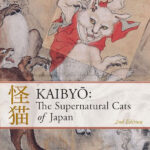Asia is the origin of numerous captivating cat breeds, ranging from the well-known Persian and Siamese to the more unique Turkish Van and Korat. While some, like the Birman and Japanese Bobtail, boast long and rich histories, others, such as the Bengal, are relatively recent additions. If you’re intrigued by felines with Asian roots, particularly Japanese Cat Breeds, you’re in for a treat. This guide explores a variety of Asian cat breeds, with a special spotlight on those hailing from Japan, offering a glimpse into their distinct characteristics and origins.
Exploring Asian Cat Breeds
1. Turkish Van Cats
 Turkish Van sitting in the garden
Turkish Van sitting in the garden
Turkish Van cats, as the name suggests, are a natural breed originating from eastern Turkey, specifically the Lake Van region. Historically, their presence also extended to areas now encompassing Iraq and Iran. These felines are characterized by their medium-length, soft, and water-resistant coats, typically white with color splashes around the face and tail. Tabby and tortoiseshell markings are also seen in this breed. Known for their muscular build, strong shoulders, and athletic physique, many Turkish Vans surprisingly enjoy playing in water. Despite their unique traits, they remain a relatively rare breed, even in their native lands.
2. Japanese Bobtail Cats
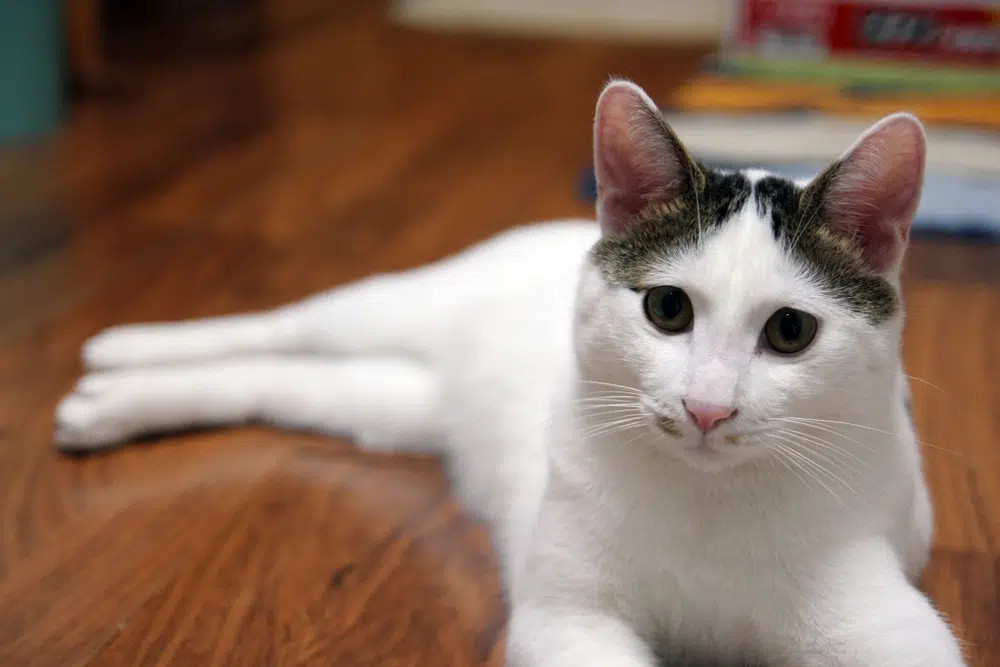 Indoor life of a Japanese Bobtail Cat
Indoor life of a Japanese Bobtail Cat
The Japanese Bobtail cat, a breed with a distinctive short, pom-pom tail, is believed to have originated in China and boasts a history spanning over 1,000 years. These japanese cat breeds arrived in Japan around the 7th century CE, gifted by a Chinese emperor to his Japanese counterpart. Their signature bobbed tail is a result of a natural genetic mutation. Japanese Bobtails are renowned for their affectionate and engaging personalities, often described as being deeply involved in their owners’ lives. Interestingly, they are the inspiration behind the iconic maneki-neko, or “beckoning cat” figurines, symbols of good luck in Japanese culture. This breed truly represents a significant part of japanese cat breeds.
3. Korat Cats
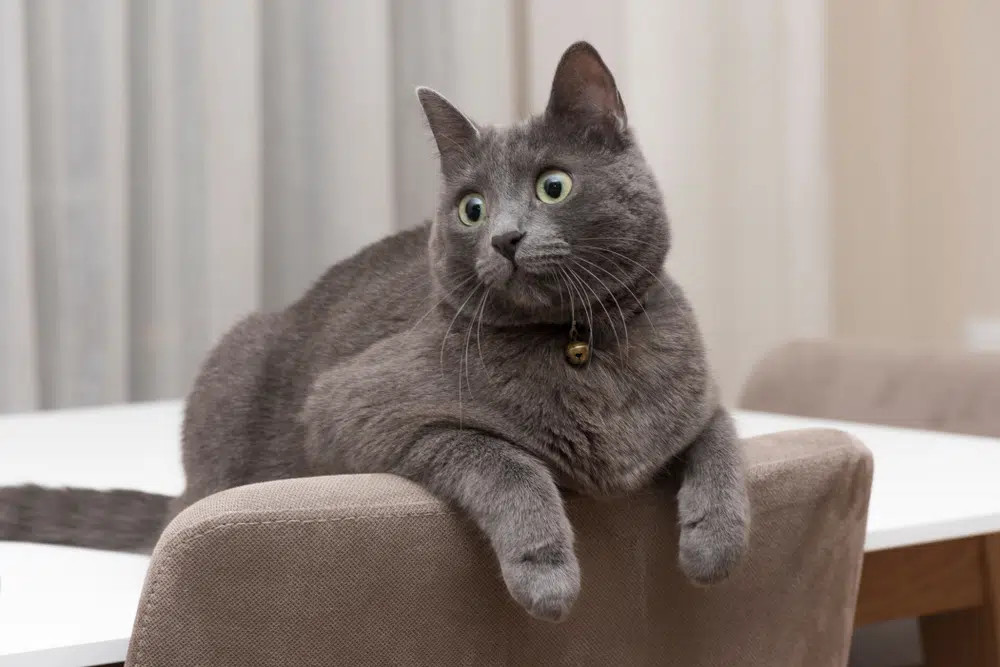 Korat Cat
Korat Cat
Korat cats trace their origins back to Thailand and have a lineage that stretches back centuries. They are even mentioned in “The Cat-Book Poems,” believed to be composed between 1350 and 1767. These cats are characterized by their small to medium size, muscular bodies, and striking short blue coats with a distinctive silver sheen. Their heart-shaped faces frame captivating bright green eyes, which start as blue in kittens and gradually transform with age. Korats are known for forming strong bonds with their families and prefer calm and peaceful home environments.
4. Singapura Cats
 Singapura Cat Breed Info
Singapura Cat Breed Info
Singapura cats hail from Singapore, where they were once commonly seen roaming city streets. They hold the distinction of being one of the smallest cat breeds, rarely exceeding 8 pounds in weight. Singapuras possess captivating large eyes, which can be green, hazel, or yellow, and sport uniquely colored beige coats – lighter near the body and darkening towards the tips of the hairs, known as “ticked” coats. These energetic felines thrive on activity and benefit greatly from engaging playtime and opportunities to learn tricks. The Cat Fanciers’ Association officially recognized the Singapura in 1988. Due to their rarity, these charming cats can be challenging to find.
5. Bengal Cats
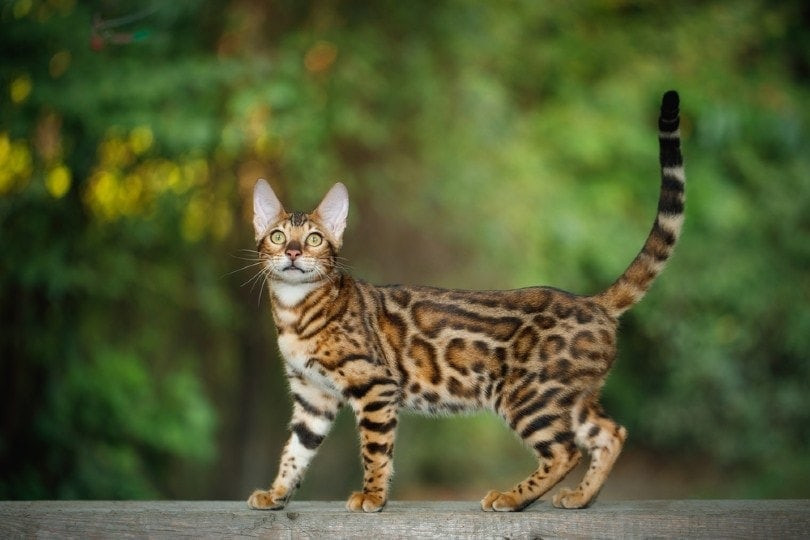 bengal cat walking
bengal cat walking
Bengal cats are instantly recognizable for their wild appearance, resembling miniature leopards. This striking look is due to their lineage, a hybrid of Asian Leopard cats and domestic felines. Bengals boast long, muscular bodies and stunning spotted or marbled coats in various shades, including brown tabby and marble patterns. Known for their high energy levels and athleticism, Bengal cats are always on the move. Their intelligence and eagerness for mental stimulation make them relatively trainable; they can learn tricks and even walk on a leash. Bengal cats are a newer breed, officially recognized by The International Cat Association (TICA) in 1991, and they reach their full size later than many domestic breeds, typically around 2 years of age.
6. Siberian Cats
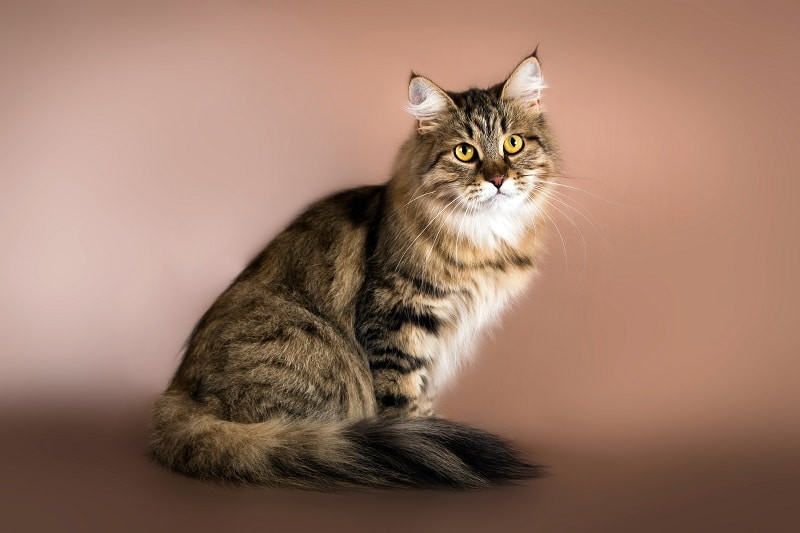 Siberian cat
Siberian cat
Siberian cats originate from the vast, cold forests of northern Russia, with a history potentially stretching back over 1,000 years. These are large and powerfully built cats, often featuring impressive neck ruffs and substantial paws, adaptations to their harsh native environment. Their thick, triple-layered, semi-long coats come in a wide array of colors and patterns, providing excellent insulation. Siberians are known for their curiosity and intelligence, making them easily trainable. They are sociable and typically enjoy interacting with people, even strangers. This breed is considered slow to mature, reaching full adulthood around 5 years old.
7. Persian Cats
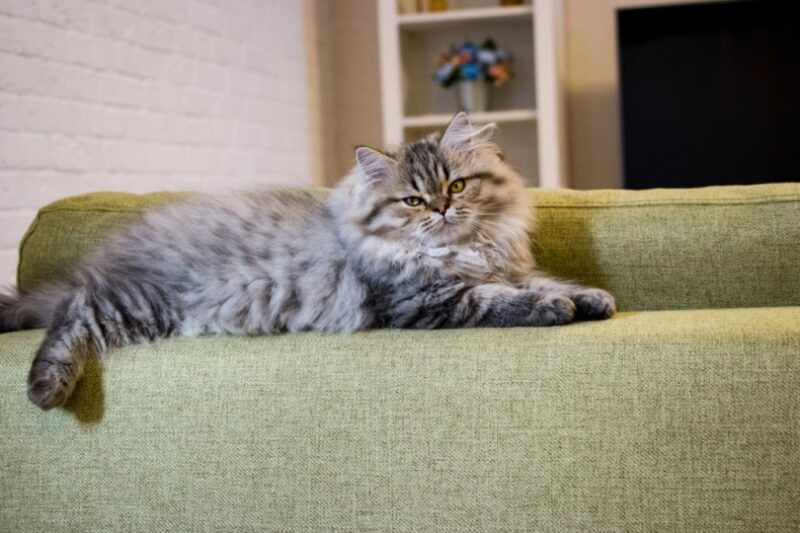 persian cat lying on couch
persian cat lying on couch
Persian cats are renowned for their luxurious long coats, sweet, cherubic faces, small ears, and short noses. Their glamorous coats come in an extensive palette of over 50 colors and hues. While their exact origins are debated, it’s believed they were brought to Europe from Persia (modern-day Iran) centuries ago. Persians are known for their gentle and docile nature, preferring quiet cuddles to energetic play. They can coexist peacefully with other pets, especially when raised together, but may not appreciate overly boisterous dogs. Persians consistently rank among the most popular cat breeds; in 2021, they were the 4th most popular pedigree breed in the United States.
8. Himalayan Cats
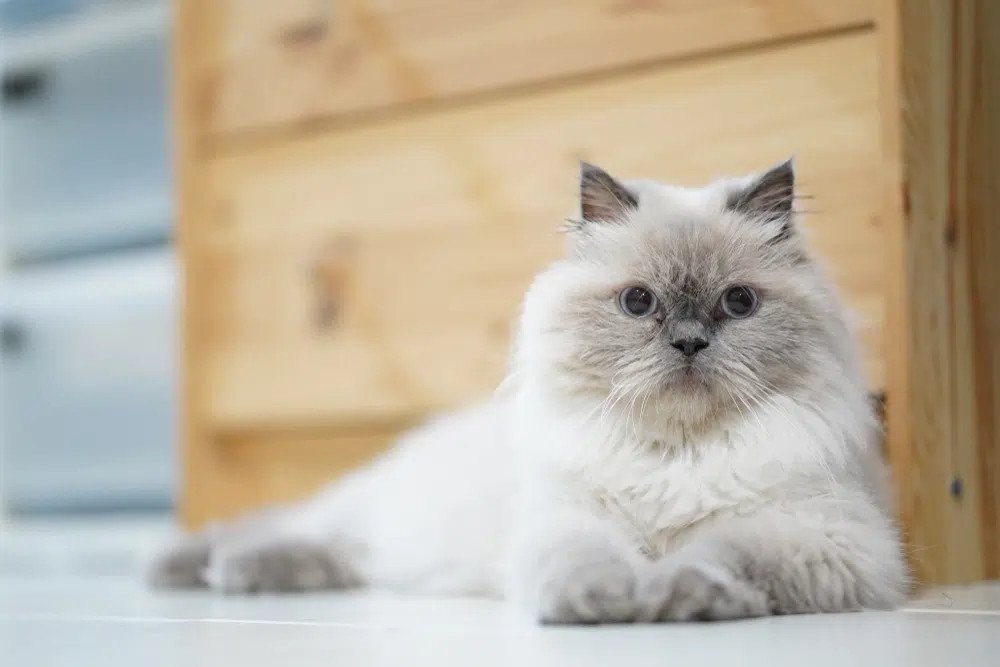 a himalayan cat lying beside wooden cabinet
a himalayan cat lying beside wooden cabinet
Despite their name evoking the Himalayan mountain range, Himalayan cats are not actually from that region. They are a human-created breed, a cross between two breeds with Asian ancestry: Persian and Siamese cats. Himalayans inherit the long, flowing coat of the Persian and the distinctive colorpoint pattern of the Siamese. Their coats come in various pointed colors like cream, chocolate, red, and seal, and can also exhibit bicolor, tricolor, and tabby patterns. Their sturdy build and snub noses are clear indicators of their Persian heritage. Himalayans are typically laid-back cats with moderate activity levels, falling somewhere between the relaxed Persian and the more energetic Siamese in temperament.
9. Siamese Cats
 a seal point siamese cat in brown background
a seal point siamese cat in brown background
Siamese cats are an ancient and natural breed originating from Thailand, formerly known as Siam. They are characterized by their elegant, slender bodies, striking deep blue almond-shaped eyes, and large, pointed ears. Their short, fine coats come in colors such as lilac, blue, and chocolate, always featuring the distinctive “pointed” pattern – darker coloration on the ears, paws, tail, and face. Siamese cats are highly intelligent and active, requiring plenty of attention and exercise to prevent boredom and potential mischief. They are known to form strong attachments to their owners and can become distressed when left alone for extended periods. Siamese cats are also famous for being quite vocal and communicative.
10. Turkish Angora Cats
 white Turkish angora cat on the couch
white Turkish angora cat on the couch
Turkish Angora cats are believed to have originated in the Ankara region of modern-day Turkey (historically Angora). They possess a medium-long coat that comes in various colors, but white is perhaps the most iconic and traditionally associated with the breed. Turkish Angoras are muscular, agile, and active cats, often enjoying elevated perches. Known for their intelligence, they can be adept at opening doors and accessing cabinets that aren’t properly cat-proofed. While Turkish Angoras enjoy human company, they can be somewhat independent and may not be overly cuddly. They are content simply being in the same vicinity as their favorite people.
11. Khao Manee Cats
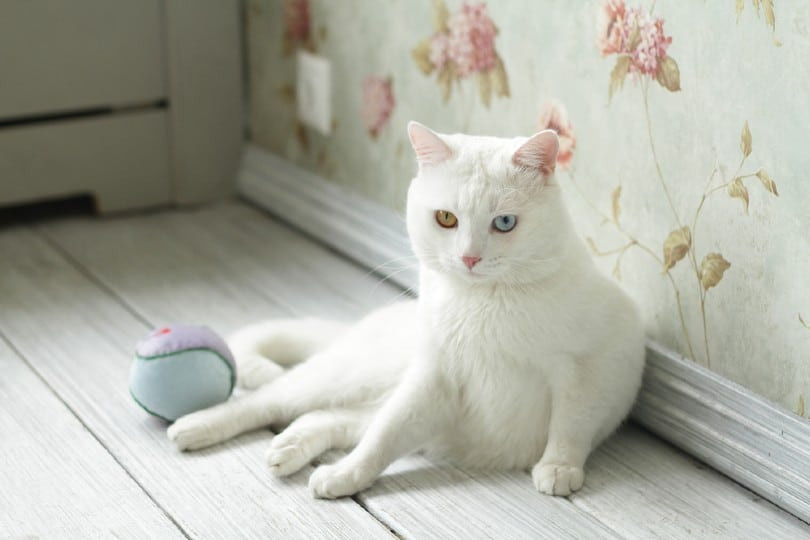 khao manee cat
khao manee cat
Khao Manee cats, another breed from Thailand, are known for their calm and gentle personalities. They are often described as affectionate lap cats who enjoy interacting with their humans. These graceful cats are characterized by their pure white coats and striking eyes, which can be blue, yellow, or even odd-eyed (one blue and one yellow). Khao Manees are intelligent and can be trained to play games like fetch. Being highly social, they generally dislike being left alone. While originating from Thailand, they have only recently gained popularity outside their native country. TICA granted Khao Manee cats championship status in 2015, marking their growing recognition in the cat fancy world.
12. Birman Cats
 birman cat
birman cat
Birman cats, with origins in Burma (now Myanmar), have a history intertwined with temple legends. They arrived in Europe around 1919 and made their way to the United States in 1959. Birmans are medium-large cats with full faces and captivating deep blue eyes. They sport semi-long, silky coats in various colors, always with the characteristic colorpoint pattern and distinctive white “gloves” on their paws. Birman cats are known for their exceptionally gentle and laid-back yet outgoing temperaments. They are typically friendly even with strangers and are known to follow their favorite people around the house. Birmans often get along well with other pets, including both cats and dogs, making them excellent family companions.
13. Burmese Cats
Burmese cats, also from Burma, possess short, glossy, satin-like coats that come in rich colors like sable brown, blue, red, chocolate, and cream. They have a compact, muscular build and expressive, widely spaced golden or yellow eyes. The first Burmese cat in the Western world, Wong Mau, arrived in the United States around 1930, paving the way for the breed’s development. Burmese cats are renowned for being exceptionally patient, gentle, and wonderful with children, making them ideal family pets. They are highly social cats who thrive in households with plenty of interaction. Their intelligence makes them readily trainable, and they often enjoy learning tricks and playing games.
14. Oriental Shorthair Cats
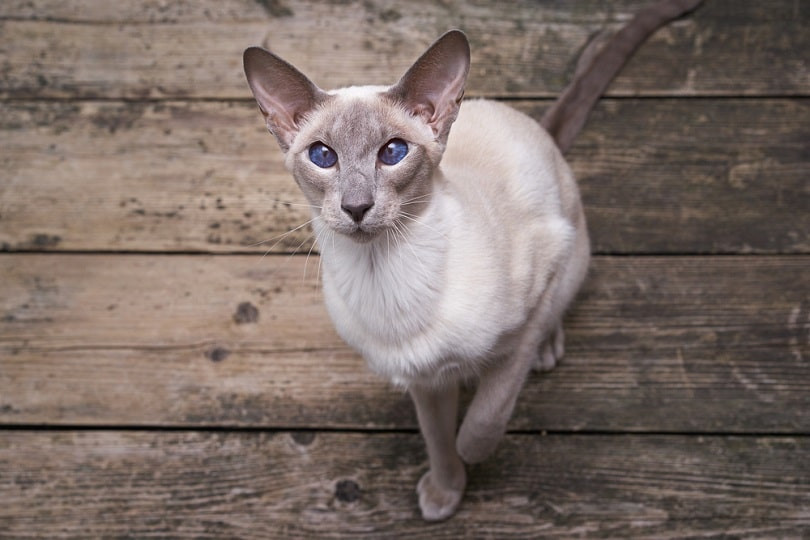 oriental shorthair cat
oriental shorthair cat
Oriental Shorthair cats share the lively and engaging personality of Siamese cats but come in an astonishing array of coat colors and patterns – virtually every color imaginable, including solids, bi-colors, and various tabby patterns. They inherit the slender, athletic body type of the Siamese. Oriental Shorthairs are incredibly affectionate and thrive on human interaction, often forming a particularly strong bond with one family member. They are known for being vocal communicators, readily expressing their opinions and desires. Like Siamese, they are agile and enjoy high vantage points. The Cat Fanciers’ Association granted the Oriental Shorthair breed championship status in 1977, recognizing their unique charm and variety.
Conclusion
The Asian continent is indeed the birthplace of a remarkable diversity of cat breeds. From the ancient lineages of Persians and Siamese to the more recently developed Bengals and Singapuras, these felines offer a wide spectrum of personalities and appearances. While each breed possesses its own distinct characteristics, japanese cat breeds like the Bobtail, alongside other Asian breeds, are often celebrated for their intelligence, beauty, and friendly nature. Exploring these breeds reveals the rich tapestry of feline diversity originating from Asia.
See also:
Sources
Featured Image Credit: TalyaPhoto, Shutterstock

